Alex C. Telander's Blog, page 63
March 8, 2013
Bookbanter Column: The Long Read (June 22, 2012)
Books come in all shapes and sizes and most importantly, in various lengths.
A variety of authors write and publish a variety books with a variety of page numbers. Some are small and seemingly pathetic 200-page novellas, some are your average 300-400 page-turners, and then there are those special authors that like to write those 800-1000 page behemoths.
Now, mind you, books will vary in length depending on genre: children’s books will usually be within that 200-page mark, young adult pushes it to 300 (unless you’re Harry Potter!), mysteries tend to be in the 300-400 page range, and a number of fantasy authors like to write those really long ones.
This column is about those special heavy tomes.
In the last couple of years there have been a number of these long books published by a variety of authors in various genres, and I’ve read a fair number of them and they’ve all been pretty good.
So if you’re looking for that long 800-1000 pager to get sucked into, check out the titles below.
11/22/63 by Stephen King (849 pages)

Jake Epping is a thirty-five year old high school teacher living in Lisbon Falls, Maine. He enjoys his simple life, conveying to kids not just the beauty of the English language, but discussing and enlightening the teenagers with some of the great works of literature.
In the opening of 11/22/63, the reader learns about Harry Dunning’s past life. Dunning is an adult student who got his high school diploma a while ago; Jake still has that very special essay Dunning wrote. It wasn’t grammatically correct, and was filled with spelling errors; but it was also the story of the day Dunning’s father came home drunk, when he was a child, and brutally murdered his mother, sister and brother with a hammer, while Dunning barely made it out alive with his life, suffering a smashed leg.
It was a moving story that Jake has never forgotten.
He enjoys his days after school going to see his friend Al, who owns a local diner, where he enjoys one of the most delicious burgers on the planet, and the amazing thing about it is he hasn’t raised his prices in decades. A customer can still enjoy a burger with fries for the ridiculously cheap price of under $3. It seems like something Jake should be suspicious about, but the burgers taste too damn good. The following day Jake meets up with Al again and finds him to be a changed man, incredibly aged overnight and he looks like he’s dying; that’s when Al tells him his story.
In the back of his diner is a portal to 1958.
Al himself has been back a number of times, and each time he comes back through it to the present, everything resets. He’s narrowed everything down to one important event he believes will change everything: the assassination of JFK. He tried once, spending five years back then, but it didn’t work. Now it’s up to Jake. And just to prove that anything is possible, Jake’s first mission is going to be to go back and stop Dunning’s father from killing his family.
Wise Man’s Fear by Patrick Rothfuss (1008 pages)
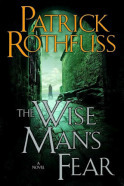
Readers are returned first to Kote at the Waystone Inn with his friend and apprentice, Bast. A new day begins, after the stories and surprising events of the one before. Chronicler sits ready to record the story, while Kote has already been up many hours, preparing fresh cider and newly baked bread. And so Kote continues the story of his life, the story of Kvothe the arcanist.
The sixteen year-old continues his studies at the University, struggling to get by. He has spent his recently acquired monies on a new lute and now has little to show for it, but the instrument is an investment. Now raised to the next level of arcanist, Re’lar, his tuition is considerably higher, and his must borrow money to pay for it. Fortunately, he has his incredible talent as a musician and singer, and is able to make some money this way through a clever scheme at the inns.
Then there is the Fishery, where all manner of arcana are made. Kvothe has spent previous terms learning and inventing simple items such as sympathy lamps that bring in a decent amount of money, but this term he is challenged to create something truly unique; it will take him many months, but the result will fetch a high price.
Kvothe is also finally granted access to the priceless Archives once more, and after learning how to travel its complex, labyrinthine halls, corridors and stacks; begins his incessant research on the unknown Chandrian, for they are the ones who murdered his family and friends.
Meanwhile, Kvothe’s relationship with Deanna continues to go nowhere fast, as he does all he can to make her happy and feel special . . . everything that is except confess his love for her. He even breaks into the rooms of his mortal enemy to steal back Deanna’s ring and proceeds to get himself into a whole mess of trouble.
At the end of the term, Kvothe seems to have everything in order, but has a couple of options: he can continue with his studies the following the semester, and risk having the gossip of his involvement jeopardize his studies; or he can leave town and try something different for a while. Fortunately at that moment, there is a rich noble from Vintas looking to woo a certain lady and needs one skilled with words. So begins the second half of the book, as Kvothe is soon on his way and finds himself involved in the noble courts, as a different world is revealed to the reader of manners and ways and courtly intrigue. Kvothe is also employed into a gang to stop a band of bandits terrorizing the tax collectors. In this gang he befriends a unique man and seeks to learn his ways and culture.
The question is whether he can understand and learn this man’s language, as well as stop these bandits once and for all. Meanwhile, in the back of his mind, Kvothe wonders and hopes if the rich noble who has employed him may wish to take him on permanently as his patron.
A Dance with Dragons by George R. R. Martin (1040 pages)
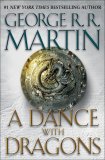
In the North, around the Wall, King Stannis Baratheon seems to spend a lot of time trying to decide what to do with no real power or army to use, while listening to Lady Melisandre, who continues to spout enigmatic prophecies that make little sense; yet readers do get to enjoy a chapter from her viewpoint for the first time.
Meanwhile, Jon Snow is elected as the 998th Lord Commander of the Night’s Watch, as he must deal with not just enemies beyond the Wall, but also amongst the very men he leads and is in charge of. He works with the wildlings, bringing them south of the wall to bolster his forces in preparation for a possible attack from the Others; it seems to be an interesting act of diplomacy, but goes on for far too many pages, with little action or continuing story taking place.
Much of the rest of the book takes place to the far East.
Martin has provided a couple of new maps, but nothing so clearly defined and comprehensible as the great continent of Westeros. Tyrion flees to Pentos, drowning himself in wine. He is forced to join with a group traveling to Meereen, along with the apparently not so dead prince Aegon Targaryen. Tyrion – as he always does – manages to get involved in a whole variety of adventures, including the meeting of another dwarf, and a female no less!
Daenerys is the character that seems most put through the ringer in this book; much like Cercei was in A Feast for Crows.
She is no longer the tough, proud, defiant woman that everyone feared, and not just because she has three growing dragons. Having conquered Meereen, she should be the unstoppable, unquestionable queen that she is, and yet insurrection is afoot and Daenerys cannot seem to decide what to do; perhaps it is because she has become obsessed and besotted with one of her soldiers and seems to be able to think of little else when he is nearby, and yet he is of lower class and cannot possibly be her husband.
The black dragon, Drogon, meanwhile is running rampant through the countryside as growing “teenage” dragons do, and Daenerys has no idea how to control him.
Finally there is Quentyn Martell, Prince of Dorne, whose story comes from nowhere as we follow his trek across the lands to Meereen, where he hopes to woo Daenerys by enslaving one of her dragons. It does not end well for him. Interspersed throughout the lengthy book are other POV chapters from the likes of Bran Stark, Davos Seaworth, Reek (who is in fact the very not dead Theon Greyjoy), Arya Stark, Victarion Greyjoy, as well as some surprise cameos from Jaime and Cercei Lannister.
Reamde by Neal Stephenson (1056 pages)
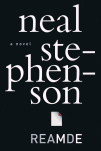
Richard Forthrast is our approaching-middle-age hero who is one of the big brains behind the multi-billion dollar MMO, T’Rain, which is known throughout the world, whether you’re a rich white kid who likes to pretend he’s an elf, or a gold farmer somewhere in Asia looking to make some good money.
T’Rain was in fact created with that in mind – Richard’s past is not a completely clean one by any means – to be open and available and possibly profitable to just about anyone on the planet with a good Internet connection. And then a very specific virus attacks T’Rain, known as Reamde, which immediately begins making a lot of money for its creators and screwing over a lot of the regular players. Richard and his team of brainiacs are now working round the clock trying to bring a stop to this.
Meanwhile, one of Richard’s family members – Zula – originally from East Africa and adopted into the family as a young girl, was hired by Richard to work for T’Rain, and becomes involved in a really big problem when her boyfriend Peter – who happens to be a renowned hacker – is looking to make good money selling credit card numbers to a shady, unknown character. Things take a turn for the worse, when the Reamde virus hits and screws everything up for him. Before they know it, the Russian mafia is breaking down their door, kidnapping them, and taking them to Asia by private jet to find the perpetrators of the Reamde virus and get their revenge.
Reamde begins like an expected Stephenson book with computers and an MMO, but then makes a change to a Tom Clancy-style thriller, as the characters travel around the world, getting involved in elaborate shootouts in distant countries.
Eventually Islamic terrorist even get involve, as well as a member of MI6 who seems to appear from nowhere and gets a twenty page introduction. The crux of the book takes place towards the end of the first third of the book, in what Cory Doctorow calls “. . .an epic, 100+ page climactic mini-war.”
The ongoing saga eventually leads back to Seattle and the northwest, passing into Canada, where the novel began, pulling Richard Forthrast into the mix.
The Way of Kings by Brandon Sanderson (1008 pages)
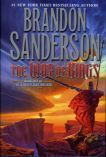
Our story focuses on two characters.
One is Kaladin, a young man in his twenties who has seen much of life already. Raised by his surgeon father to become a brilliant doctor, he instead turns to the life of a warrior, with hopes of getting his hands on a Shardblade, and soon sees his fair share of death and bloodshed.
Now he is a slave, for reasons unknown, with little to hope for in life. He soon becomes a member of the bridge crew, a group of slaves whose job it is to carry a giant, heavy bridge across great distances and to lay it across the chasms to allow the soldiers to cross and attack the enemy. Kaladin becomes part of bridge team four, which is renowned for losing the most lives each time it races into battle. Kaladin finds a unique luck on his side, as he manages to continue to survive, and then chooses to work for his team, train them, create survival tactics for them, and he discovers something he thought he’d lost for good: hope and his will to live.
Then there is Shallan, a young woman whose family has fallen on hard times after the death of their father. The family is in possession of a Soulcaster, a unique magical device that can essentially create just about anything out of nothing, only now it is broken. However, Shallan has a plan: to become the ward and student for Jasnah Kolin, sister of King Elhokar of Althekar, with plans to replace Jasnah’s Soulcaster with her own; her only problem is she has no idea how to use it.
A number of interludes throughout the book help to introduce some minor characters to explore some more of this overwhelming world, such as Szeth-son-son-Vallano, who is an assassin from the land of Shinovar, possessing a unique magic to flip gravity around. And then there are the spren, which are spirits that seem to be caused by or drawn to specific happenstances and emotions, such as fear, pain, music, rot, and glory to name a few.
Little is known or understood of the spren, other than they exist, while Kaladin finds himself befriending a specific spren that seems to be evolving.
Under the Dome by Stephen King (1074 pages)
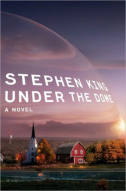
Imagine the quintessential American town – Chester Mills, Maine – where life has rolled along at its own sedate pace since the beginning of time; it is a simple life that many envy and yearn for, while others disregard and ridicule.
Now imagine that an invisible dome forms around the boundaries of the town, trapping everyone and everything inside, as well as preventing anyone and anything from entering; all that is able to pass through is air since it’s composed of tiny molecules. From now on the humble citizens of Chester Mills must live off of whatever supplies and reserves they have.
Then add some classic, unique and outright bizarre Stephen King characters; you’ve got yourself a very special story, weighing in at over a thousand pages.
There’s Dale Barbara, an ex-military man who came to Chester Mills to get away from everything, working as a cook at Sweetbriar Rose. After getting into a serious fight with the town bullies – who include the sheriff’s son – he’s all set to quit town, but the dome comes down before he’s able to make his escape. Now he’s trapped inside with a whole mess of people who hate his guts and would sooner see him dead.
Jim Rennie – known as “Big Jim – is the town’s Second Selectman, a member of the three-member team that makes up the governing body for Chester Mills. Only Big Jim has everyone in his pocket, owning him favors, and he’s also been running an underground scheme that’s making him a very rich man. He thrives on power and being in charge, and when the dome comes down he thinks it’s the greatest thing in the world; his calling from God to take charge once and for all.
Julia Shumway is the editor, publisher, and devout writer for her very own Chester Mill’s Democrat, continuing the family business, and always looking for a great story and a way to reveal the true, seedy underbelly of Chester Mills that she knows exists. After Dome Day, she knows Jim Rennie is up to something and will stop at nothing to expose him for the fraud he is.
And 13-year-old Joe McClatchey, a good-looking nerd with all the answers, but he also has some important ideas about what exactly the dome is and what might’ve made it happen. While the town slowly devolves into pandemonium, he spends his time trying to find out the cause of it all.
Stephen King conceived this book, originally titled Cannibals, early on in his career, but was never satisfied with the story.
Now he has delivered the weighty tome of Under the Dome, where lines will be drawn, sides declared, alliances forged, and enemies and allies made.
Many people will die – which is no surprise for a King novel – but the wild thrill ride will keep you addictively reading, aching to find out how it all ends.


Bookbanter Column: Ray Bradbury Remembered (June 11, 2012)
On June 5th, 2012, we lost one of the greatest writers of our time: Ray Bradbury.
He lived to the impressive age of 91, and continued to write and do signings and readings well into his eighties.
He is perhaps best known for some of the most important science fiction novels of the twentieth century, such as The Martian Chronicles and Fahrenheit 451, which continue to be read not just by fans, but by high school students across the country.
One of the early pioneers of science fiction, up there with Isaac Asimov and Robert Heinlein, his short stories are unique and unforgettable.
The short story was Bradbury’s true forte, with his incredible ability to encapsulate so much within a limited number of pages. His lyrical prose, compelling characters, and moving plots made him a writer not just to be categorized in the genres of science fiction and fantasy, but to be enjoyed by mainstream readers across the globe.

Bradbury in 1999
I got to meet Ray Bradbury at a signing and reading in the fall of 1999.
It was at California State University Long Beach, where I was currently working through the second semester of my Bachelor’s. Coincidentally, it was also the first date with this new girl I’d met recently; that girl has been with me ever since, and this year we celebrated our eighth wedding anniversary. The reading took place in the university theater and my wife had been asked to control the spotlight, which was a great bit of hands on experience for her lighting class.
As we sat there in the booth, watching and listening to the great Ray Bradbury talk, I can remember being torn between showing my interest in this new girl in my life, but also wanting to listen to this incredible writer talk. It was an intimate moment in every sense of the work. At the end of the reading, my wife got her book signed, as well as one for her dad, who had introduced this great author to her at a young age.
It was a very special event I shall never forget.
With an average reading of a hundred books a year, there are a few rituals I have incorporated into my reading throughout each year.
One is the reading of A Christmas Carol during the week before Christmas.
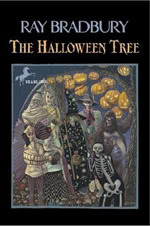
The other is the reading of Ray Bradbury’s The Halloween Tree before Halloween each year.
Even though the book was published in 1972, there is a timelessness about it, as Bradbury perfectly encapsulates the exciting feeling of Halloween, no matter what age you are, and then takes you back in time through a history of origins for this celebrated night known throughout the world. It is a magical tale that’s a delight to read every year.
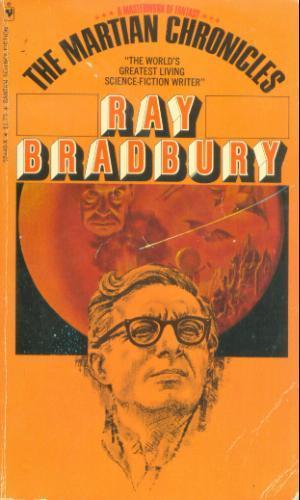
The Martian Chronicles is my favorite Bradbury novel, and I can remember reading it for the first time in my science fiction class in early 2000, and found it fascinating that Bradbury was pushing the boundaries in so many ways with this book, not just with science fiction, but also with the development of the science fiction novel.
Bradbury, like many of the other science fiction greats, began as a short story writer publishing in the science fiction and fantasy pulp magazines that were so popular at the time. But with the development and growing popularity of the genre novel, he turned to the longer form.
The Martian Chronicles was one of those unique books that began as a bunch of published short stories that Bradbury converted into a novel by writing “linking” stories to make the collection feel more like a seamless novel.
Ray Bradbury will be missed by many.
He was not simply a delight to read for so many fans, but an inspiration for many writers, and continues to be so. Stephen King had this to say on his passing:
“Ray Bradbury wrote three great novels and three hundred great stories. One of the latter was called ‘A Sound of Thunder.’ The sound I hear today is the thunder of a giant’s footsteps fading away. But the novels and stories remain, in all their resonance and strange beauty,”
while Neil Gaiman said,
“The landscape of the world we live in would have been diminished if we had not had him in our world.”
But then the beauty of the written and published and print word is its ability to last long after the author has left this world.
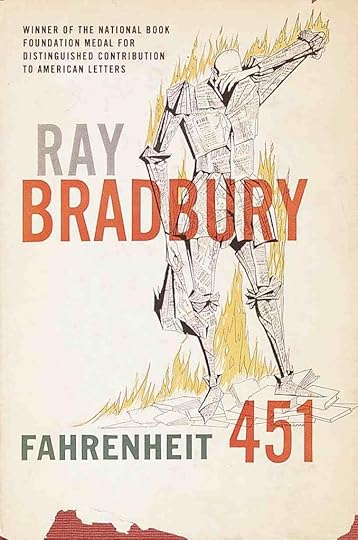
While we have lost one of the giants in the world of writing, whose beautiful prose will be long missed, we can all still enjoy his stories and books for the rest of our lives. And for future generations, they can discover the alien red worlds of Mars in The Martian Chronicles, or learn of a doomed dystopian future in Fahrenheit 451, or feel the strong emotional pull of the great leviathan in “The Fog Horn.”
But it is up to us to keep Bradbury’s work alive and read.
I know I will continue to tell family and friends and eventually my children about this great author who thrilled, delighted and entertained the world with his incredible stories, and about the one time I even got to meet him.


March 7, 2013
Bookbanter Column: The Only Zombie Books You Ever Need to Read (May 25, 2012)
If you’re a reader and a fan of the horror genre, then chances are you’ve read a zombie book of some sort; maybe more than one.
In case you haven’t noticed, this living dead sub-genre simply won’t go away, as more and more zombie books are being churned out, to the point where most horror authors have now tried their writing hands at bringing an unlikely character back from the dead.
In an earlier Book Banter Column I discussed the short history of the zombie genre, which you can read here.
The big problem I find with most zombie books is that that’s all the story is really about: zombies attacking humanity and how humanity fights back, kills them for good, and ends up winning. End of story. This is fine as a story premise, except that it’s been done so many times, not just in books, but in movies, comic books, as well as various other forms of media.
For me the unique zombie story is one that has an interesting, captivating story in a world where there are zombies.
Enter Mira Grant.
Mira Grant is the pseudonym of Seanan McGuire. Seven years ago she came up with an idea for a zombie book that was a small idea that became a big one, then a trilogy.
The first book, Feed, was released in 2010 and was nominated for a Hugo Award. The second book, Deadline, was released in 2011 and received just as much support and good press as its predecessor. The final book in the trilogy, Blackout, was released just this week and has already been getting lots of coverage and hurrahs from fans.
So the complete trilogy has been released, and it honestly feels more like one long book, making it the perfect time to check this series out and give it a read.
Here’s why you should read Feed:
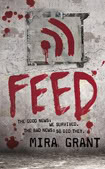
It is the future, the year is 2039.
Twenty-five years ago the Kellis-Amberlee virus was released and began turning humanity into zombies.
The world is now a very different place: many people rarely leave their homes, or the protected confines of their neighborhoods; many places have been overridden by zombies, while the government does what it can to feebly protect its people. Georgia Mason (named after someone who understood zombies very well) and her twin brother Shaun are bloggers. When everything went to hell a quarter-century ago, the media denied what was happening, mocking the bloggers who were purportedly telling the truth. Now the bloggers have become the media, for they are the only ones brave (or stupid) enough to get close to the zombies and report what’s happening.
It’s an election year and Republican Senator Peter Ryman is running for president, looking to change the country, to make the American people feel safe and protected once more.
George and Shaun and their techie Buffy have been picked as members of the media to cover Senator Ryman’s campaign, launching them into journalism stardom. But then something terrible happens, at one of the Senator’s events; zombies attack and people die. As the Senator’s campaign continues, George, Shaun and Buffy try to put the pieces together and work out exactly what’s going on, and why the Senator is being attacked, in an attempt to ultimately find out who is behind it all.
Mira Grant is not simply telling a good story about zombies; she is instead telling a fantastic story about a group of young bloggers covering the campaign of a hopeful presidential candidate in a world where there are zombies and fear is a part of everyone’s everyday life.
And as the book comes to a close, the reader realizes there are things in this world that are worse than zombies.
They’re humans.
Here’s why you should read Deadline:
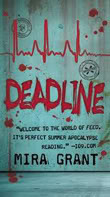
Shaun Mason is in a very dark place.
In a world where every person wakes up with the fear of zombies in their minds, as well as the terror of somehow amplifying at any moment, Shaun doesn’t really care anymore.
When he had to shoot his sister and kill her before she fully amplified, it was definitely a turning point in his life. And now he has very little to live for; his sister was everything to him, and had always joked about what she would do when he was dead, because he was the risk taker. There was no scenario for when George was killed and Shaun was left all alone. Though there is one little light in this dark, dark tunnel and that is that Shaun still talks to his sister . . . in his head. She’s alive and well in his brain and he talks to her, has conversations with her, even argues with her.
Fortunately, anyone else who spends time with him knows that Shaun is now pretty much crazy and they all just deal with it.
But the world must go on and Shaun has a news organization to run, along with an experienced team, he makes the decisions when he has to and lets the talented people he has working for him do what they do best; while the former daredevil who used to fly in the face of danger for the chance to get some great zombie footage is no more.
And then a member from the CDC drops into their laps with an incredible story to tell. A story that has everything to do with the Kellis-Amberlee virus, how it might have got started, and where the CDC is on the cure. She’s also faked her own death and appears to be off the radar, and then a devastating outbreak coincidentally happens right where Shaun and his team are currently hanging out. Some make it out, while others are incinerated, as outbreak protocols are followed. This event awakens the spark and drive that has been missing in Shaun for some time.
Now he has something to go on, a clue that will lead him on the trail to finding out who had his sister killed and how this virus got “accidentally” released and destroyed the world.
And here’s why you should read Blackout:

We last left George apparently somehow alive and well, living the life of a clone in a CDC lab.
She slowly puts things together as time passes, but for every answer there are fifty more questions. Also is she really Georgia Mason? She doesn’t have the reservoir condition anymore; she’s a lot thinner that George ever was; and her hair is annoyingly long and bleaching with every shower.
Then she finds out she might have an ally or two on the inside, but she isn’t sure if she can trust them.
Meanwhile, as Shaun continues to talk to Georgia in his head and act all kinds of crazy, he keeps the gang of After the End Times on the move.
After spending some time with Dr. Abbey in her secret lab, as she takes copious daily amounts of his virus-immune blood, he thinks about where the trail is leading next, where he can get more answers, and find out just what this whole conspiracy is all about. It will involve possibly going on a rescue mission to Florida, which has been designated a zombie-ridden loss for the country; meeting with his parents who he hates, to ask for help; and tracking down the best I.D. counterfeiter in the business to start their new lives.
Mira Grant skillfully switches between the George and Shaun storylines with each chapter, making the characters appear as distinct and complex as they were in the first two books, as she slowly but seamlessly brings them together, building the tension and thrill. The reader knows the step-siblings are going to meet up again at some point, but will Shaun be able keep his sanity or will he just be pushed over the edge? Then there’s the question of which clone of Georgia Mason will be there to greet him?
Blackout is the perfect, satiating finish to the trilogy, making the three-book series feel like one long, epic story.
No reader will be disappointed, with a worthwhile ending that will leave him or her sad that the wonderful journey is now over . . . but just like when the end of Harry Potter was reached, or the final page of Stephen King’s Dark Tower series, how many of us turned back to the first book and started reading that first page once again.
Having reread the first two books, this trilogy will be one I will continue to reread constantly throughout my lifetime.
(Originally published on Forces of Geek)


Bookbanter Column: The Art of the Book Review, Part II: Fiction vs. Nonfiction (April 27, 2012)
There are many different types of books that have been published; all shapes and sizes, lengths – some short, some very short; some long, and some behemoths!
Accordingly, there are many different types of reviews to go with these books.
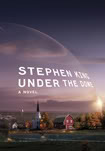
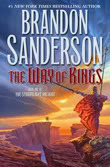
Sometimes there is a correlation: a short review for a short book, a long review for a long book (I tend to do the latter, especially if it’s a long book that I enjoyed, such as Under the Dome and The Way of Kings).
But when it comes down to the type of book, different thoughts and processes need to be employed, especially in the case of the fiction book versus the nonfiction book.
The Fiction Review
When it comes to writing a book review on fiction, the two parameters to keep in mind are the story and the characters. (There’s a minor third, writing, that I will get to later.)
I’m a story kind of guy, so if it’s a good story, I’m hooked right away, and that tends to be what I look for in a book I’m interested in reading. I certainly get picky with books that take a while to get going, especially if the world isn’t interesting enough to get me engaged or at least keep me interested.
The second parameter is character, which can pretty much always save a book, even if the story isn’t doing it.
Now, I’m not saying that a terrible story can be miraculously saved by a strong character or two, but a story that doesn’t really seem to be going anywhere, or is dragging along, trying to pick up steam, can be kept alive with its characters.
Some people read books solely for characters, and decide to read certain books on this premise. Characters can be interesting, or complex, or have some unusual tic that the reader may identify with or just keeps them interested; or it can be all these things.
The quasi rule is that a good story can keep a book alive, even if the characters aren’t really doing it for you; alternatively an interesting character can keep a book alive, if the story seems like it’s going nowhere fast; ultimately it will be up to the reader whether one or other of these facets holds out and keeps them reading.
Now, there is technically a third parameter, which is the writing; but it tends to be the weakest of the three in keeping a book alive, at least for me personally. If the story isn’t doing much, and the characters aren’t that engrossing; good, creative, original writing can hook a reader in. But for me, this is certainly on a limited time, as good writing will only keep me going for so long, if the characters don’t get interesting, or the story doesn’t go somewhere.
When writing the fiction review it’s important to touch on these parameters of the story: what made it compelling, what it was that hooked me, and a decent amount of the actual story but not too much to give everything away (see Part 1: How I Write a Book Review for more on this); the characters, what makes them interesting and unique, and again what I liked about them; and finally if the writing is unique and impressive, to discuss what I enjoyed so much about it and what made it different from anything else I’ve read before.
The Nonfiction Review
For the nonfiction book review, it’s a whole different entity.
Once again, the story and characters and writing each play their own part, but in a completely different way to a fictional book, for this is a tale of fact and reality; a true story.
The story in nonfiction relies more on how it is formatted and arranged. Sometimes it’s chronological – which is most popular with biographical works; others have framing chapters to set the scene; some chapters even end with cliffhangers, to hook the reader on to the next one. This has actually been a relatively new development in nonfiction, at least that I’ve noticed in my reading, creating an almost fictional arrangement to a nonfictional story.
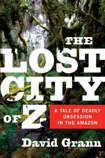
The book that fits this profile most is The Lost City of Z, where the story of a man’s life is told like an adventure story or thriller, with each chapter ending on a gripping moment or cliffhanger, making the reader want to keep reading. It’s certainly an interesting turn on the stereotypical work of nonfiction, which implies the idea of being read at a slow and easy pace, to absorb everything that is being covered, and to be ingested piecemeal. With The Lost City of Z, the reader is hooked like they are in fiction, wanting to find out what happens next; the fact that it is a true story serves as an enjoyable reminder to the reader.
When it comes to characters in the nonfiction book, if the author is aiming to be true to who the story is about, there’s really very little that can be changed from who this person was, and what the sources say about him or her, depending on how much of their lives the writer chooses to tell.
But assuming the author wants to tell the correct story of this particular person, when it comes to telling the story of the character, they can be presented in a “by the facts way,” which can often lead to a stagnant story that plods along at a slow pace and doesn’t necessarily hook most readers. Naturally, there are always exceptions to this, and some readers love and prefer this type of writing and seek it out when it comes to nonfiction.
On the flip side of this particular coin, characters that have seemingly dry, boring lives can be completely brought to life by a talented author with a great writing style.
As I mentioned earlier, story, character, and writing play a part in the nonfiction book review, but in different ways, on a different stage.
The story is what it is, because it is one that actually happened, and shouldn’t be embellished or altered; how the writer chooses to tell it, in what particular format, can lead to a seemingly dull story becoming a fascinating, engrossing one. Characters can be brought back to life, in a new light that may be as true to how that person actually was, but still told in such a way that keeps the reader thoroughly interested. As for story, it is often strongly linked with the character, so that the two essentially become one and the same.
As for writing, it can help bring a seemingly simple story about an ordinary person to a whole new life and vitality that may not have existed before with the primary sources available.
In writing the nonfiction book review, like the fiction one, it’s important to tell part of the story going on, but not to give absolutely everything away; however there are also exceptions to this, because it is a work of nonfiction – and especially in the case of the biography – the complete story is likely already known, so there are no real surprises to be had, unless this is brand new material that has been discovered and is being revealed in this particular book for the first time.
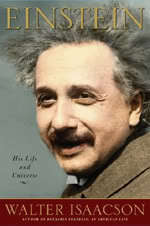
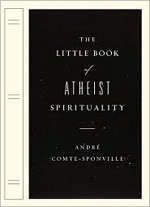
So in some reviews, I will tell most of the story of the book (such as with Einstein, His Life and Universe and The Little Book of Atheist Spirituality), or as in the earlier mentioned case of The Lost City of Z, I will only give so much of the story away to keep the reader hooked.
Whether I’m writing a book review on a fiction book or a nonfiction book, there are some similar ideas and thoughts I take into account each time I sit down to write one or the other, but there is also a necessary distinction between the two, which makes me think differently with each type of book review I’m writing.
(Originally published on Forces of Geek)

Bookbanter Column: The Art of the Book Review, Part I – How I Write a Book Review (April 13, 2012)
I’ve been writing book reviews now for over ten years; 2014 will actually be my fifteenth year of writing reviews.
I started in college, working for the student-run newspaper, and while my life has changed in many ways since 1999, and I’ve moved to a number of different places, two things have remained constant: I am continuously reading one or more books at a time, and when I’m done reading a book I will usually review it, no matter when it was released.
My website, BookBanter, now has over 600 book reviews, and as of April 13th, I posed my 650th review.
I have had a number of my reviews quoted in books, and one even quoted on the cover – Amber Benson’s Cat’s Claw.
So I like to think I know a thing or two about writing book reviews.
I’m sure if you scour the internet you’ll find a number of sites and documents and perhaps even treatises proclaiming how to write the ideal or perfect book review, and how there is a set form and format to it that cannot be diverged from, if one is seeking to create said “perfect book review.”
However, as anyone who hasn’t had their head stuck in the ground (or perhaps print journalism) for the last decade knows, most of these “ideal” ways of writing a book review are aimed at newspapers and magazines, but with the advent of blogs — both professional and personal — where many people write their own book reviews, or just even blog posts on specific books they’ve read — as well as the likes of Goodreads, the dynamic of the formatted book review has changed and in most cases doesn’t really apply anymore.

Many people have many different ways of writing book reviews.
There are also many people who feel certain ways are completely wrong, and that there is only “their way,” but this is what writing and the Internet is all about.
There are many, many, many books in the world, and most of them I wouldn’t ever be interested in reading, and yet there are still many people who would and do read and buy these books.
The same pretty much goes for book reviews.
Long story short: different people like different types of book reviews.

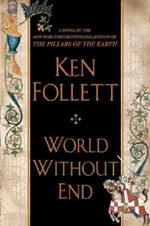
Now, when I sit down to write a book review it will depend on the type of book it is (genre, story, etc.), how much of a fan I am of the author — I tend to write longer reviews for authors I’m a fan of, or at least like, as well as books that are longer (see Under the Dome and World Without End) — and what publication I am writing the book review for, as there may be a word count limit.
Here’s the basic mental outline I automatically perform when doing a book review for a book I enjoyed; I have a standard three- to four-paragraph layout.
Paragraph 1:
I usually begin with two to four sentences to kind of hook the reader into the book; much as you want the cover and first line of a book to be captivating, you want a similar effect with the opening paragraph of a book review — especially if it’s a long one and you want the reader to keep reading to the end.
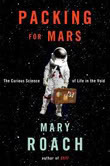
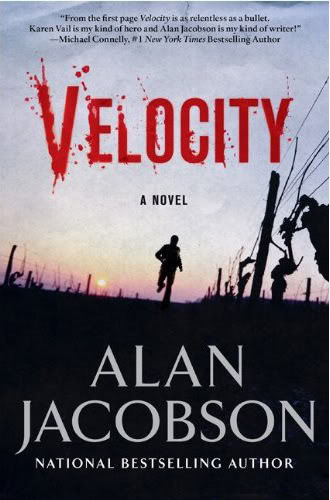
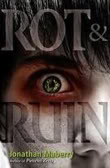
Sometimes I’ll open up with a general fact that I find interesting about the author or the particular books the author writes, such as with Mary Roach’s Packing for Mars. Other times I’ll deliver a short one-liner and then go into a brief couple of sentences about the author’s other books, especially if this is a sequel, such as with Velocity by Alan Jacobson. In cases where I don’t know much about the author or his or her books, and this is the first book of theirs I’m reading, I’ll do a couple of sentences on what the author has done before and then give a brief hook on why this particular book is a good one, like with Jonathan Maberry’s Rot & Ruin.
Paragraph 2 (and 3):
The next paragraph or two are usually the long ones where I’ll make a summary of the story.
There’s a fine line to be made here, balancing how much of the story to tell, but also keeping lots left to be discovered by the reader. A general rule of thumb is you want to reveal who the characters are, perhaps a little about their background, and where they’re headed in the story; about the first third of the book is usually a safe place to stop. Again, it depends on the type of book.
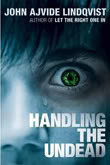
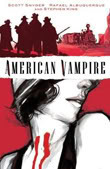
For some reviews, such as Handling the Undead and American Vampire, it becomes necessary to reveal a large part of the plot to actually show what is going on in the book, but it’s always important to keep a number of secrets hidden for the reader to discover when they read the book.
One rule that must always be followed is an easy one: never give away the ending.
I know there are people out there who read the ending first thing, before they even start the book, and those people are just darn weird; but you don’t give away any sort of ending in a book review (unlike a number of movie previews I’ve seen). I’m the type of person who very much doesn’t like to get spoiled; usually once I have an idea of what the book is about and I’m interested in it, I’ll just start it without reading the inside flap or the back of the book.
For me it’s all about the mystery and being surprised by where the story is going to take you.
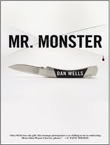
Depending on the length of the book and how much story is needed to be told, this part usually takes one or two paragraphs. At the end of this section of the book review, you want to finish with a sort of cliffhanger line that will really make the reader want to read the book, such as with Dan Well’s Mr. Monster, where I end my summary paragraph with, “But something’s not quite right about this guy from the FBI.”
Final Paragraph:
If the reader is still on the fence about whether to read the book or not, this is the final chance to get them.
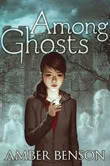
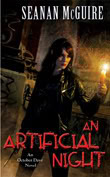
Here is where I usually talk about the writer and/or the writing, the style, the language used, what I enjoyed about the writing, such as with Amber Benson’s Among the Ghosts. Or I’ll talk about what I particularly enjoyed about this book and why I think people should read it, like with Seanan McGuire’s An Artificial Night. As for the last line, by this point you have to have captured your reader and made them want to read the book; the last line isn’t going to make much of a difference one way or the other.
I generally end with a question of what the author will do next, or what the next book in a series might be, or a quick one-liner on why I enjoyed the book.
And there you have it.
(Originally published on Forces of Geek)


March 6, 2013
Book Report: DR. SLEEP, B&N Impending Doom?, GAIMAN Sells Out To TOM HANKS & More

Riggio Offer
Barnes & Noble chairman Len Riggio is looking to buy the company.
Barnes & Noble’s Midlife Crisis
B&N’s state of the union is not looking so good.
Sanderson’s New Book
The second book in Brandon Sanderson’s Stormlight Archive now has a title.
Sanderson Writing
Ever wonder how Brand Sanderson does all that writing? Here are some YouTube videos showing you.


Bookbanter Column: Ebook vs. Print (April 2, 2012)
I think we’ve all reached the point now where the “e-revolution” is not just coming but it’s already here and doing very well.
For anyone not accepting and getting on the e-bandwagon, you can go and join those who are still fans of a flat earth and disbelieving in global warming. And for the rest of us who acknowledge that ebooks are here to stay, we may be in various stages of acceptance.

As for myself, I still have yet to own an ereader; however, I feel that 2012 will be the year in which I acquire one. I have only read a small number of ebooks so far, a quantity I’m able to count on one hand, but I also know that this will change, and the prophets foretell of more ebooks in my future.
So with ebooks now vying against print books for sales in the world of publishing, let us take a look at the merits and negative connotations of these two mediums of reading.
While I don’t believe one isn’t necessarily superior to the other, I know there are plenty of spokesmen for each medium; no one is likely to be the true victor, as was the case with say Blu-ray and HD DVDs.
But let’s take a look at how they stack up.
Ebooks
The jury still seems to be out on what is the proper form of this enigmatic word; whether it’s ebooks, or eBooks, or Ebooks, or even e-books. (I personally am sticking with ebooks for now, since the word we use for books of the audio variety is audiobooks.) Ebooks have been around for some time. Stephen King was actually one of the first authors to try this new format, first with his serialized ebook series in 2000, The Plant, which was subscription-based with a new chapter every month, but sadly subscribers tapered off and it subsequently stopped.
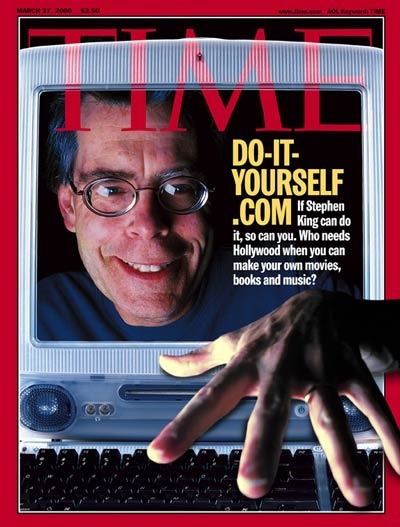
The first year of the new millennium also brought the genesis of the first mass-market ebook, also by Stephen King, entitled Riding the Bullet at the modest price of $2.50. I actually purchased this ebook, which was an average-length short story, when it came out. It was a PDF with a full color cover and was most entertaining as I read it on the large heavy monitor of my desktop computer in the ancient year of 2000.
Ebooks are now available in a variety of formats, which has only been a relatively recent development; just a few years ago the options and versions were quite limited. Now customers interested in purchasing an ebook can buy it in: epub format, which works on most ereaders, most ereading apps, and with the free software Adobe Digital Editions; mobi for the Kindle; and PDF, which again works on most ereaders and ereading apps, as well as with Adobe Acrobat Reader.
The wonderful thing about ebooks is how portable and easy to use they are.
You can read them on your computer, your laptop, your phone, and your ereader. The covers are often the same (or sometimes alternate to the print edition) and in full glossy color. All software, apps and ereaders have the option of creating a bookmark or saving the page you were last reading, so you can easily return to it next time. If there’s a table of contents, this will often be hyperlinked, meaning you can speedily jump forward to a specific chapter or a map or the index if you so wish. For some who are comfortable with reading text on a screen, one can make the point that they read faster this way than with a print version, since the turn of the page is simple and fast, done with the press of a button or the swipe of a virtual page; technically faster than an actual book.
Ultimately, if you want to get a book as fast as possible (if you’re at home) and start reading right away, ebooks are certainly the way to go. You can usually get the ebook as soon as the book is released (and sometimes sooner); the download will take less than a minute and you can begin reading your favorite author right away. If you’re using an ereader, the battery life is often good enough for a day or so, and if you’re reading a computer or plugged in laptop you needn’t worry about the power issue; you can just keep reading and reading, as the sun crosses the sky and night falls . . .
Print Books
The written word has been around for millennia, the printed word for over 570 years. To make this clear right away, and dispel any worriers and naysayers, I fully believe the printed word and the printed book will not become obsolete and disappear in our lifetimes; in fact, I still think it’s going to be around for at least another century or two, and may well remain around for longer. I believe this in my heart and soul, because as I write this now I gaze up at the seven bookcases surrounding me; the various paperback books on the coffee table and couch; while upstairs is my cold computer and its harddrive of ebooks.
There is a life in the printed book, a magic that will never be reproduced by the ebook. For every fan of the ebook, there are those greater in number who enjoy or prefer the printed book.

Printed books embody the story they hold within their pages, with the size, texture and smell; the older the book, the more noticeable are these tactile attributes. As the year the book was printed reaches further back in time, one cannot help but imagine the hands that have held it, the many eyes that have read its words; the smell of the rooms it has been in, and the many lives it has affected. The familiar image of “curling up with a good book” adds a warmth and timelessness to it, but if one replaces it with the prop of an ereader, the picturesque scene is corrupted.
At the moment the printed word is cheaper than the electronic one.
By this I mean that if you have a book that’s been out for a while that you’re interested in purchasing, you can look online for the ebook version, which will likely be a few dollars less than a new copy; however, a used copy will almost always be cheaper than the ebook. I’m not sure if this is something that will change in time, as publishers agree to new standards for ebook pricing (because it’s still a very new technology for them), but the publishing world is notorious for adapting slowly and reluctantly; while readers looking for a particular book can go into a used book store — a retail space which is still doing well — and likely find the title they’re looking for and more for a much cheaper price, or they can shop around online on sites like ebay, half.com, abebooks, or even Amazon for lower prices when compared to the ebook edition.

Ultimately, when ebooks and print books are compared together, the latter is the one that feels the more real. With the runaway world of self-publishing where anything and everything can and is being published online, there is but a single bestseller for every thousand sad excuses for books. Compare that to a fresh new, weighty hardcover, or a glossy captivating quality paperback, or even the feel of a nice thick mass market . . .
And when you go to that author reading, is it really the same when they autograph your ereader?
If the last five years of the world of books and publishing has shown anything, it’s that one cannot safely predict what the market will be like and what exactly will be happening in a year’s time, or even six month’s time.
Many said ebooks wouldn’t catch on, then ereaders and the revolution happened to take over the published word and change the publishing world forever. Many have been spouting out thoughts and opinions and predictions: some say the mass market will become obsolete, which is what happened in the British markets; others says the limited and illustrated collectible hardcover will grow and become popular. And I’m sure there are still those who say ebooks are eventually going to go away and the printed word will return strong and unstoppable, while others say the opposite and the printed word’s days are numbered.
I honestly don’t know what’s going to happen, and the future of books cannot be confidently predicted by anyone, but I am certain the printed word will not die out anytime soon, and as I sit here with the spines of thousands of books looking upon me, I know there’s no place in the world I’d rather be than surrounded by real, printed books.

But them I’m kind of biased.


Bookbanter Column: The Authors of Stephen King (March 16, 2012)
If you’re kind of a Stephen King nut like me — and I know there are many of you out there — then you’ve read pretty much everything this great author has ever written.
To date the man has published around seventy books covering just about everything (as well as repeating himself a couple of times with similar storylines).
I can still remember the first book of his I read, Four Past Midnight, and that first story, “The Langoliers,” which was just fantastic and scary and great in so many ways.
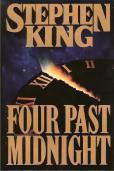
I can remember my thirteen or fourteen year-old self actually feeling nauseous with the graphic detail of the little girl having the hatchet removed from her chest, and the quick surgery that had to be performed. Every time he has a new book come out, I’m there, dropping everything, gobbling it up and loving it.
He’s my happy place, where I can easily forget about the rest of the world and get lost in one of his.
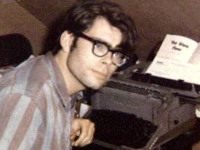
Stephen King has also been incredibly instrumental (even though he has no clue) in shaping me as a writer, making me first want to create scary, evocative stories like his own, and then to just keep on writing and telling tales for now over fifteen years.
A strange thing also happens when I read one of his books featuring an author as a character, for in addition to enjoying the book, it also makes me want to put the book down and write myself.
I’m not sure why, but it just does; it’s quite the conundrum.
Recently, I started thinking about the many Stephen King books I’ve read, and I began wondering how many of those had authors as the main characters, and then contemplated the number that had some secondary character who was a writer, and added them all up in my head, which resulted with a pretty high number.
So I started researching, and while King has had many characters who are English teachers (because King himself was once), as well as artists of some kind; authors are the predominant character type in his books. One immediately thinks of the writing adage, “write what you know,” but I also think King just feels very comfortable writing these characters, but then if you look at some of his longer novels, like The Stand, Under the Dome, or his most recent, 11/22/63, there are no author characters there.
So it’s not so much that this character type has become a crutch for him to fall on in any way, but that he apparently just likes writing about them and using them.

Here is my pretty comprehensive list of Stephen King’s novels featuring authors as main or secondary characters. I didn’t include short stories in this, because that would’ve taken a lot longer, but I’m sure many of those are sprinkled with characters who are writers too, however, I have included the novellas in this listing.
They are arranged chronologically.
‘Salem’s Lot (1975): Ben Mears, writer.
The Shining (1977): Jack Torrance, aspiring writer, alcoholic (which King knew plenty about); also insane.
The Stand (1978): Harold Lauder, possibly a bit of a stretch, since he’s a high school student, but still a poet published in a local publication.
It (1986): William Denbrough, a kid who likes telling great and scary stories who becomes a bestselling author.
Misery (1987): Paul Sheldon, a successful romance novelist.
The Tommyknockers (1987): Roberta Anderson, a writer of Wild West-based fiction; James Eric Gardener, poet and alcoholic.
The Dark Half (1989): Thad Beaumont, pretty successful novelist and recovering alcoholic; “George Stark,” while a pseudonym of Beaumont, he becomes a distinct character in the book.
Four Past Midnight (1990): “The Langoliers,” Bob Jenkins, mystery writer; “Secret Window, Secret Garden,” Mort Rainey, successful novelist.
Desperation (1996): Johnny Edward Marinville, formerly successful novelist.
Regulators (1996): John Marinville, children’s author.
Bag of Bones (1998): Mike Noonan, bestselling author.
Lisey’s Story (2006): Scott Landon, successful novelist.
Full Dark, No Stars (2010): “Big Driver,” Tessa Jean, successful mystery novelist.
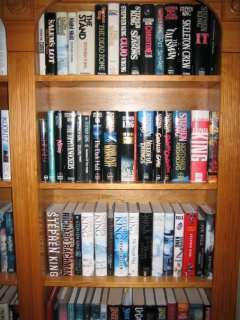
And there you have it: fourteen appearances by fourteen writers, which is a pretty hefty number; almost 10% of his books.
Now, I don’t mean this as any sort of insult or critique, but more of a matter of fact; an “I wonder if . . .” experiment, which has been an interesting one.
If I were to be able to ask Stephen King about this, I’m pretty sure his answer would be something to the effect of:
I’ve written about 70 books, which is a lot of words, a lot of stories, and a lot of characters.
I’m a successful writer, so of course there are going to be author characters in my books. Do I think consciously about it when I do it: no. Do I do it because it’s the easy cop out: no.
Stephen King is famous for saying he’s one of those writers who doesn’t work with a detailed outline, but just goes with it, a form often known as discovery writing.
He begins with an idea that he keeps in his head for any length of time that grows and develops and then begins writing the book when it’s ready to be written. If there is a writer as a main character, he doesn’t think much about it, but just writes the book as it wants to be written.
Or maybe he just likes the thought of torturing writers in his stories?
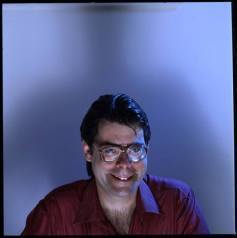
Who knows?
But the next time someone sees him, be sure to ask him.
(Originally published on Forces of Geek)


Bookbanter Column: Borders Lives on, Sort of (March 2, 2012)
A lot people will acknowledge that 2011 was a pretty bad year for a lot of people; it was also the worst year possible for Borders, concluding with its going out of business sale in September, where thousands of employees (including yours truly) lost their jobs.
During the month of the company’s demise, I wrote a column, “Thank You Borders,” on what Borders had done for me personally, as well as what it had done for so many readers and customers and employees over its many years of service.
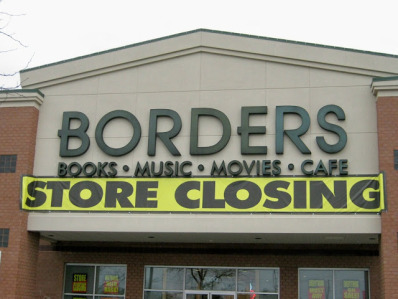
Now, six months later, Borders Books, Music & More is becoming little more than a memory for everyone . . . and yet the memory that was Borders lives on in some ways.
This is how.
For about a month now I have been working for Dimple Records, where I am known as the “book guy.”
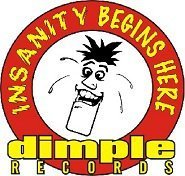
Dimple Records is a chain of seven stores in the Sacramento area that sells new and used music, DVDs, and video games; they even have an awesome used vinyl store.
Throughout the month of March Dimple Records will be rolling out the first of their store remodels, as they move into the world of selling new and used books.
The first store will be the Citrus Heights store and will offer a larger variety of titles of fiction and nonfiction, as well as children’s and graphic novels.
In my work in preparing the books for this first remodel, I have come across a number of these “memories” of Borders.
During my days, I spend my time sorting, organizing, shelving and preparing hundreds of books, and everyday I come across evidence that there was once a chain of bookstores called Borders. A number of the used books I come across have the “BINC sticker” on the back of the book, which was the sticker that Borders used to identify and organize every single book it received.
The sticker tells me things like when the book was received, where it was shelved, what the cost of it was, and what store it came from. It’s almost like a time capsule as I look at each sticker, which helps me shelve the book in the appropriate section for Dimple. Of course, I have to take the sticker off and discard it, but with each BINC sticker I see, I learn when it was roughly bought and from which store and have a little thought about the short history of this book when it once lived at a store called Borders.
A number of the bookcases and bays that I’m sorting and shelving onto were once located within a Borders store, which helps me as I know how to adjust the shelves, use the endcaps, attach shelf-talkers, etc. Dimple Records also acquired a number of other fixtures from Borders with plans to use them with their remodels, all of which I am familiar with. There was even an A-frame that had an old sign I’d made myself during the going out of business sale from the Roseville store, and I can remember selling that fixture to the customer who was from Dimple; little did I know I would be working for them within five months time.

Finally, every once in a while I’ll be going through a box, taking out the books in columns and stacks and then sorting through them, placing them in their respective section piles, and I’ll come across an old relic of a book with the “Borders Exclusive” sticker on it. These were books that were either directly published by Borders using their own publisher, or were books that were published and were only sold and available through Borders. The one I came across the other day was The Great Snape Debate, which was made available at Borders leading up to the release of the final Harry Potter book, Harry Potter and the Deathly Hallows.
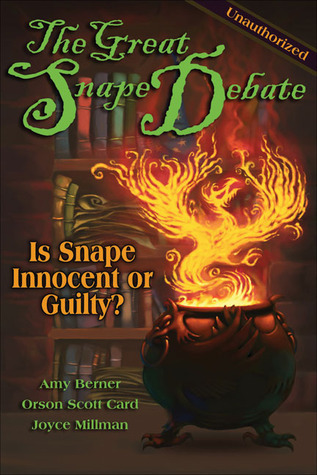
It featured writings from the likes of Amy Bermer, Orson Scott Card and Joyce Millman, on whether at the very end Snape would turn out to be a friend or an enemy to Harry Potter. As I saw this book, I was instantly taken back to the release of this book, and the midnight release party of the final Harry Potter book at my Borders store.
These “reminders” represent just a few memories of Borders that I have come across so far, and I will no doubt come across more in the future. My story also is a single, personal one, and there are no doubt a number of similar stories being experienced by people across the country, as those fixtures and shelves and BINC-stickered books and Borders Exclusives are rediscovered by people who used shop at or work for Borders. Some readers may see this column as little more than a piece of nostalgia, as I have a fun little trip down memory lane, but I think there is more to this. It gives a sense of recycling about these Borders items and fixtures, as they are reused for new purposes, or in the case of Dimple Records, are reused for the purpose they were originally intended.
So the next time you’re in a bookstore, take a second to stop and think about where the shelf or bookcase may have come from; contemplate on whether it might’ve once made its home within a former Borders bookstore; flip over that used book and take a peak and see if there’s an old sticker on the back that’s a mustardy-yellow. If it’s got one, that means your holding a book in your hands that was once purchased from a Borders bookstore.
(Originally published on Forces of Geek)


Bookbanter Column: Great Tools for Writing (February 17, 2012)
A lot has changed in the world of writing since the first word was recorded by human kind, and how writer’s write has changed greatly also. There were the Egyptians recording on their papyrus, Homer carving into stone, Chaucer writing away on vellum, Shakespeare scratching on parchment, writers of the twentieth century tapping away on their typewriters; and then there was the dawning of the new age of the computer or word processor.
No longer did writing involve multiple instruments of paper and pen, pencil or quill, there was just the comprehensive unit of the computer: a monitor and keyboard all that was needed to record the written word.

With the advent of the internet and the many tools and programs that have become available through it, the dynamic of writing has evolved a step further, making it easy to do your writing wherever there is a computer and internet connection.
The concept of the “iCloud” from Apple is making it so that you can access all your “stuff” – be it music, writing, photos, or whatever – from the device of your choosing which connects with the “cloud” and grants you access to all your material.
The only problem is that the iCloud is a subscription-based tool, and for us struggling writers cost is everything. Fortunately, the internet – that bastion of so many free and important programs – has a number of tools for writers to make the process of writing that much easier and enjoyable.
Now, I am not advocating that these recommended programs below will by any means make your writing better, or ensure that you’ll get that story or manuscript published, or even that you will actually do more writing . . . however, these tools will help set the “ideal” conditions for most (if not all) writers. Writers, whether we admit it or not, are fickle beasts who will come up with any and every excuse under the sun to put off doing any sort of writing when one is planning to, especially if it is a particularly meddlesome passage or scene that needs to be written.
These tools will help one focus on the work at hand, make the accessing of one’s writing quick and easy, and set the correct parameters for one to be productive and prolific, and they’re all very free and available to everyone.
Tools to help you in your writing
These are tools that will help keep your writing in one place and make it easy to access wherever you may be, so long as you possess an internet connection, making it possible for you to be writing anywhere at any time.
Gmail
It seems like every time Google comes out with another update, there are those who think it brilliant and revolutionary, and those who find it annoying and a hindrance. The jury appears to still be out on Google Plus, but Gmail continues to improve by leaps and bounds.
In addition to a very large amount of space, you can access your Google calendar, your photos, as well as a number of other shortcuts all within your Gmail account. You can also access a thing called “Google Documents.”
So here with Gmail alone there are two important tools available to writers (which I personally use all the time):
1) A Whole Lotta Room
Gmail grants you seven gigabytes of space for your emails. While this certainly seems to be a form of overkill, for a free program, it’s invaluable! You never have to delete another email again, and can backup everything without worrying about running out of room. Coupled with Gmail’s excellent search ability to track down “that old email,” by any keyword, it makes it all worth it.
There’s also another important facet to this large amount of space: you can backup all your writing!
I learned this from a blog post from Neil Gaiman a number of years ago, when he admitted that he does this: all his writing is backed up on his Gmail account, sent to himself as an email. Words don’t take up that much space in documents, even when there’s hundreds of thousands, or even millions of them.
This is a practice that I constantly employ now, where after each writing session I send myself an email with an attachment of my latest work, whether it be a story or completed part of a manuscript, and with Gmail’s great filing system, I just archive it under the specific folder and feel at ease knowing the words are safe. That way should my computer or laptop mysteriously blow up, I have a copy of my work saved in cyberspace.
I recommend everyone do it, as it also gives you the ability to access your writing wherever you are with a simple internet connection.
2) Your Cyber Documents
Selecting Google Documents will open up the documents section where you can organize and create a new document, be it a spreadsheet, PowerPoint, or any number of other options, including a regular “Document.”
Selecting this will open up an inviting blank page, encouraging you to begin your next opus . . .
It is essentially a word processing document where you can do most things you do with your word processing software on your computer. There’s even an option for viewing word count, to see how you’re doing. The key here is that it automatically saves constantly, and has a number of shortcuts to make it quick and efficient to use.
So from now on you’ll be able to access, view, edit and/or add to your work again simply with just the use of an internet connection.
My Writing Spot
My Writing Spot is another tool that works much like Google Documents; in fact it links with your Gmail account, and offers a simpler document program for writing, with fewer distracting options, but again plenty of shortcuts to make it quick and easy to use. A nice perk of this program is that your word is constantly on show, egging you on to keep writing. In fact, this is the program I’m using right now to write this column.
Again, to gain access to this tool, all you need is an internet connection.
Tools to help you focus on your writing
These are tools that help provide music, essentially. I’m a big fan of listening to something when I’m writing, that way if there are people talking nearby (like at a cafe, or perhaps a busy household), putting on headphones and listening to some music helps me focus on losing myself in the world of my writing.
So here are some tools to help you enjoy some free music and help yourself be whisked away with your words.
Pandora
Many people are familiar with Pandora, and for any of those who aren’t, it’s a great free music application. There are a number of preset channels you can use just by putting in a keyword to search for them.
Alternatively, you can create your own channels for the particular types of music you like. I enjoy instrumental music mainly when I write, and have a number of music channels such as Celtic, new age and electronica. Pandora works by you adding an artist, and then playing a song by that artist, and you can continue to add more artists to make up a playlist of sorts; the algorithm will then select songs of a similar sort to play.
Here’s the real nice thing with Pandora: if you don’t like the song, you can indicate this by clicking on the downwards thumb icon (and alternatively, if you like the song, click the upwards thumb icon) and it will skip to the next song. You only get so many “skips” as a free subscriber, but it’s a very handy tool. Some other free music programs include Last FM and Spotify.
Capital Public Radio
This for those fans out there who enjoy some good classical music to lose themselves in their writing.
Finding a good classical music station is a hard feat, since a number of the so called “popular” ones play nonstop pieces that have become quintessential and at this point cliché when one thinks of classical music . . . as if the likes of Mozart and Beethoven had never created anything else. Capital Public Radio is a public radio station based in the Sacramento, California area that has both a jazz station and a classical station.
I have been listening to the classical station for five years now, enjoying its fresh and moving classical music. The hosts are talented in their choices and I always look forward to listening to the radio station. Capital Public Radio is, very fortunately, available online for streaming, making it available to anyone on the planet with an internet connection. There is a music playing application, as well as apps for Apple and Android.
I recommend this station heartily to take you away from the real world into the one you’re working on creating.
These recommended tools represent merely a minor smattering of the many that are available online. I hope that I have at least provided some options to aid you in your endeavor to get some good solid writing done, with the aid of these writing programs, and some distracting music. If there are other tools that you enjoy using and recommending, feel free to mention them in the comments section below.
For now, open up that Gmail Document, set that Pandora station playing and get some writing done!
(Originally published on Forces of Geek)





